MONDAY 15 MAY 2023 AT 2 PM
UBC Botanical Garden, 6804 SW Marine Drive
Symposium: encou(n)ters
-
Scott Billings
Scott Billings is a visual artist, industrial designer and engineer based in Vancouver. His sculptures and video installations have been described as existing somewhere between cinema and automata. Centering on issues of animality, mobility and spectatorship, Billings’s work examines the mimetic relationship between the physical apparatus and the virtual motion it delivers. In what ways does the apparatus itself reveal both the mechanisms of causality and its own dormant animal quality? Billings addresses this question under the pursuit of the technological conundrum and a preoccupation with precise geometry and logic. Billings holds an MFA from the University of British Columbia, a BFA from Emily Carr University and a BASc in Mechanical Engineering from the University of Waterloo. He teaches at UBC and Emily Carr as a sessional instructor.
Billings is represented by Wil Aballe Art Projects.Read More
-
Justine A. Chambers
Justine A. Chambers is an artist and educator living and working on the unceded Coast Salish territories of the Squamish, Musqueam and Tsleil-Waututh Nations. Her movement-based practice considers how choreography can be an empathic practice rooted in collaborative creation, close observation, and the body as a site of a cumulative embodied archive. Privileging what is felt over what is seen, she works with dances “that are already there”–the social choreographies present in the everyday. Her choreographic projects have been presented at Libby Leshgold Gallery (Vancouver), Culture Days (Toronto), Contemporary Art Gallery (Vancouver), Helen and Morris Belkin Gallery (Vancouver), Sophiensaele (Berlin), Nanaimo Art Gallery, Artspeak (Vancouver), Hong Kong Arts Festival, Art Museum at the University of Toronto, Cantor Fitzgerald Gallery at Haverford College (Haverford, PA), Agora de la Danse (Montréal), Festival of New Dance (St. John’s), Mile Zero Dance Society (Edmonton), Dancing on the Edge (Vancouver), Canada Dance Festival (Ottawa), Dance in Vancouver, The Western Front, and the Vancouver Art Gallery. She is Max Tyler-Hite’s mother.
Read More
-
Andrea Damascelli
Andrea Damascelli, Professor and Tier I Canada Research Chair in the Electronic Structure of Quantum Materials, is Scientific Director of the Stewart Blusson Quantum Matter Institute (Blusson QMI) at UBC and Co-Director of the Max Planck-UBC-UTokyo Centre for Quantum Materials. Damascelli works in one of the most advanced areas of condensed matter physics: quantum materials. His work has gained global recognition and helped make Canada a leader in the field of photoelectron spectroscopy — a highly sophisticated technique that images the energy and velocity of electrons propagating inside a material. As a physicist, he has always been passionate about the arts and humanities, and has long looked for creative ways to bring the disciplines together. Ars Scientia is an important step towards this vision.
Read More
-
James Day
James Day is an experimental physicist and research associate with the Quantum Matter Institute. He completed his PhD from the University of Alberta in 2008, and spent his time there exploring the fundamental properties of quantum solid helium-4. He has been at UBC, in various capacities, ever since. His expertise is in low temperature physics, scanning tunneling microscopy, microwave spectroscopy and physics education. Roughly speaking, he studies how electrons behave in exotic materials, and how students behave in first-year physics labs. He loves science outreach, cares deeply about equitable learning and continually attempts to do better.
Read More
-
Alannah Hallas
Alannah Hallas is an Assistant Professor in the Department of Physics, UBC. She heads the Quantum Materials Design Lab, part of the Stewart Blusson Quantum Matter Institute. Before coming to UBC, Hallas completed her PhD in physics as a Vanier Scholar at McMaster University and was the Smalley Postdoctoral Fellow at Rice University. Having worked in both physics and chemistry departments, Hallas is passionate about taking an interdisciplinary approach to the study of quantum materials.
Read More
-
Jeremy Heyl
Jeremy Heyl is a Professor in the Department of Physics and Astronomy at UBC. His recent research has focused on compact objects: white dwarfs, neutron stars and black holes. These are the most extreme objects in the universe. Astrophysicists think that they provide the power behind quasars and gamma-ray bursts, the brightest objects in the recent universe. His team discovered that stars like the Sun lose much of their mass in the final million years of nuclear burning, not gradually over a billion years as previously thought. He discovered waves in the oceans of neutron stars (yes, neutron stars have oceans) and the fate of our Galaxy after it collides with the Andromeda galaxy). Hint: there will be no Milky Way after that happens!
Read More
-
Josephine Lee
Josephine Lee is a first-generation immigrant whose work is largely informed by a lifetime of movement across Canada and the United States. Lee’s interdisciplinary practice explores the psychic violence of cultural assimilation and nationalism. Her performances, installations, and sculptures shift between an intersectional analysis of this violence at the scale of a nation (where nuclear tests, land-seizures, and xenophobia exacerbate one another) and of the home (where the burdens of identity and generational trauma can be foundational and inescapable). Lee holds graduate and undergraduate degrees in science and fine arts. She has exhibited throughout Canada and the United States, as well as performed at documenta 14 in Kassel, Germany. Recently, Lee was awarded the Oscar Kolin Fellowship, the Vera G. List Sculpture Award, and a Gail and Stephen A. Jarislowsky Outstanding Artist Award at the BANFF Centre for Arts and Creativity. Lee currently resides within the stolen territory of the Coast Salish Peoples, including the territories of the xʷməθkwəy̓əm (Musqueam), Skwxwú7mesh (Squamish), and Səl̓ílwətaʔ/Selilwitulh (Tsleil-Waututh) Nations.
Read More
-
Kelly Lycan
Kelly Lycan is a photo-based installation artist who resides in Vancouver, BC, Canada on the traditional and unceded territories of the Sḵwx̱wú7mesh (Squamish), səl’ilwətaɁɬ (Tsleil Waututh) and xʷməθkʷəy̓əm (Musqueam) Nations. Lycan’s work investigates the way objects and images are placed and displayed in the world and the cycle of value they experience. She employs photography and sculpture in order to engage them beyond medium specificity. Lycan received a Bachelor of Fine Arts from Nova Scotia College of Art and Design and a Master of Fine Arts from the University of California, Santa Barbara, and Los Angeles. Her work has been exhibited across Canada, the US, Europe, and the Middle East, including solo exhibitions at Ag Galerie, Tehran, Iran (2018); Burrard Art Foundation, Vancouver (2016); Susan Hobbs Gallery, Toronto (2015-16); Presentation House Gallery, North Vancouver (2014); SFU Gallery, Burnaby (2014); Or Gallery, Vancouver (2011); and Gallery TPW, Toronto (2009). Lycan also collaborated from 2005-2015 with the artist collective Instant Coffee, a service-oriented artist collective that have exhibited widely.
Read More
-
jg mair
jg mair is a Vancouver-based multidisciplinary artist and media designer specializing in mixed media, web and audio. He has a BFA from the University of Victoria and a BEd from the University of British Columbia. mair has been working in the areas of both traditional and digital contemporary art and as a sound designer for various game studios developing titles for publishers including Apple, Electronic Arts, Microsoft and Netflix. mair has had exhibitions and residencies in Canada, USA, South Korea and Japan.
Read More
-
Kavita Philip
Kavita Philip is the President’s Excellence Chair in Network Cultures and Professor in the Department of English Language and Literatures, UBC. Her research and teaching in Global South histories and sociologies of science, computational technologies, environment, network cultures, media and politics crosses geographic boundaries and ranges across scholarly disciplines. For 25 years, Philip has been engaged not only in the intellectual task of forging methods to connect techno-scientific, social scientific and humanistic inquiry, but also in the institutional task of building these collaborative spaces. She seeks to develop public humanities research that acknowledges the intertwined material and social contexts of cultural production.
Read More
-
Shelly Rosenblum
Shelly Rosenblum is Curator of Academic Programs at the Belkin. Inaugurating this position at the Belkin, Rosenblum’s role is to develop programs that increase myriad forms of civic and academic engagement at UBC, the wider Vancouver community and beyond. Rosenblum received her PhD at Brown University and has taught at Brown, Wesleyan and UBC. Her awards include fellowships from the Center for the Humanities, Wesleyan University and a multi-year Presidential Postdoctoral Research Fellowship, Department of English, UBC. She was selected for the Summer Leadership Institute of the Association of Academic Museums and Galleries at the Kellogg School of Management, Northwestern University (2014). Her research interests include issues in contemporary art and museum theory, discourses of the Black Atlantic, critical theory, narrative and performativity. Her teaching covers the 17th to the 21st centuries. She remains active in professional associations related to academic museums and cultural studies, attending international conferences and workshops, and recently completing two terms (six years) on the Board of Directors at the Western Front, Vancouver, including serving as Board President. At UBC, Rosenblum is an Affiliate of the Peter Wall Institute for Advanced Studies.
Read More
-
Susan Sechrist
Susan Sechrist writes literary and speculative fiction as well as critical essays at the intersection of fiction, science and mathematics. She writes Go Figure, a column about mathematical metaphor in fiction, for the online literary blog Bloom. Sechrist’s math-curious short story, A Desirable Middle, was published by Journal of Humanistic Mathematics. Sechrist lives in Vancouver on the unceded, ancestral territories of the Coast Salish First Nations where she is a student in the Creative Writing MFA program at the University of British Columbia.
Read More
-
Timothy Taylor
Timothy Taylor is an Associate Professor and Graduate Advisor at the School of Creative Writing. He is also a bestselling and award-winning author of eight book-length works of fiction and nonfiction, a prolific journalist, and creative nonfiction writer. In addition to his writing and teaching at UBC, Taylor travels widely, having in recent years spent time on assignment in China, Tibet, Japan, Dubai, Brazil, the Canadian arctic and other places. He lives in Point Grey Vancouver with his wife, his son, and a pair of Brittany Spaniels named Keaton and Murphy.
Read More
The Ars Scientia research cluster launched a collaborative residency program in 2021, bringing together artists and physicists to interrogate the intersections of art and science. Please join us for our second annual research symposium, encou(n)ters, to learn more about residency experiences and engage in interdisciplinary discussions with our participating artist and physicist investigators. Alongside presentations from Ars Scientia collaborators, we are honoured to invite Kavita Philip for a keynote lecture. UBC’s Research Excellence Cluster program seeded Ars Scientia with the objective of creating programming that fuses the practices of art and science in the emerging field of interdisciplinary research.
Read a summary of the symposium.
Symposium Program
Building Momentum, 2-3 pm
Opening remarks by Ars Scientia research leads Shelly Rosenblum, Jeremy Heyl and Andrea Damascelli; Artist talks by jg mair with Alannah Hallas and Timothy Taylor
Experiments in Real Space, 3:15-4:30 pm
Introduction and audience participation experience by James Day; Artist talks by Josephine Lee, Kelly Lycan and Scott Billings
Keynote Address, “Arts as Experiment, History as Theory, Politics as World-Building: Lessons from a Collaboration”: Kavita Philip, 5-6 pm
Introduction by Susan Sechrist; Keynote address by Kavita Philip
Artistic creations are never neutral. Implicitly or explicitly, they take a stance positioning themselves in one way or the other within current artistic, cultural and political discourses. The stakes are particularly high when exploring the boundaries between the Biosciences and Art. This talk reflects on lessons learned at one such boundary. The project “tactical biopolitics” emerged through experimental collaborations among scientists, artists, and STS scholars. Tactical Media as a form of artistic practice had emerged in the early nineties. Inspired by de Certeau’s “Practice of Everyday Life,” and motivated by the need for constant collaboration and coordination with larger strategy-based movements of resistance, thinkers and practitioners developed a “tactical” practice of art. These intersections – between art and experiment, history and theory, politics and world-building are even more relevant today. How should we, as scientists, artists, or STS scholars, understand the legacies of these recent histories?
Please join us for a reception following the panels to continue the conversation and enjoy the garden
Photo (above): Kelly Lycan, Index card from Andrew Ng’s research documentation (note created on 8 September 1982 at UBC, from an extensive collection of research polaroids and index cards rescued by Kirk Madison; gifted to the artist during Ars Scientia Residency, 2021)
Conceived and Developed by Shelly Rosenblum
-
Scott Billings
Scott Billings is a visual artist, industrial designer and engineer based in Vancouver. His sculptures and video installations have been described as existing somewhere between cinema and automata. Centering on issues of animality, mobility and spectatorship, Billings’s work examines the mimetic relationship between the physical apparatus and the virtual motion it delivers. In what ways does the apparatus itself reveal both the mechanisms of causality and its own dormant animal quality? Billings addresses this question under the pursuit of the technological conundrum and a preoccupation with precise geometry and logic. Billings holds an MFA from the University of British Columbia, a BFA from Emily Carr University and a BASc in Mechanical Engineering from the University of Waterloo. He teaches at UBC and Emily Carr as a sessional instructor.
Billings is represented by Wil Aballe Art Projects.Read More
-
Justine A. Chambers
Justine A. Chambers is an artist and educator living and working on the unceded Coast Salish territories of the Squamish, Musqueam and Tsleil-Waututh Nations. Her movement-based practice considers how choreography can be an empathic practice rooted in collaborative creation, close observation, and the body as a site of a cumulative embodied archive. Privileging what is felt over what is seen, she works with dances “that are already there”–the social choreographies present in the everyday. Her choreographic projects have been presented at Libby Leshgold Gallery (Vancouver), Culture Days (Toronto), Contemporary Art Gallery (Vancouver), Helen and Morris Belkin Gallery (Vancouver), Sophiensaele (Berlin), Nanaimo Art Gallery, Artspeak (Vancouver), Hong Kong Arts Festival, Art Museum at the University of Toronto, Cantor Fitzgerald Gallery at Haverford College (Haverford, PA), Agora de la Danse (Montréal), Festival of New Dance (St. John’s), Mile Zero Dance Society (Edmonton), Dancing on the Edge (Vancouver), Canada Dance Festival (Ottawa), Dance in Vancouver, The Western Front, and the Vancouver Art Gallery. She is Max Tyler-Hite’s mother.
Read More
-
Andrea Damascelli
Andrea Damascelli, Professor and Tier I Canada Research Chair in the Electronic Structure of Quantum Materials, is Scientific Director of the Stewart Blusson Quantum Matter Institute (Blusson QMI) at UBC and Co-Director of the Max Planck-UBC-UTokyo Centre for Quantum Materials. Damascelli works in one of the most advanced areas of condensed matter physics: quantum materials. His work has gained global recognition and helped make Canada a leader in the field of photoelectron spectroscopy — a highly sophisticated technique that images the energy and velocity of electrons propagating inside a material. As a physicist, he has always been passionate about the arts and humanities, and has long looked for creative ways to bring the disciplines together. Ars Scientia is an important step towards this vision.
Read More
-
James Day
James Day is an experimental physicist and research associate with the Quantum Matter Institute. He completed his PhD from the University of Alberta in 2008, and spent his time there exploring the fundamental properties of quantum solid helium-4. He has been at UBC, in various capacities, ever since. His expertise is in low temperature physics, scanning tunneling microscopy, microwave spectroscopy and physics education. Roughly speaking, he studies how electrons behave in exotic materials, and how students behave in first-year physics labs. He loves science outreach, cares deeply about equitable learning and continually attempts to do better.
Read More
-
Alannah Hallas
Alannah Hallas is an Assistant Professor in the Department of Physics, UBC. She heads the Quantum Materials Design Lab, part of the Stewart Blusson Quantum Matter Institute. Before coming to UBC, Hallas completed her PhD in physics as a Vanier Scholar at McMaster University and was the Smalley Postdoctoral Fellow at Rice University. Having worked in both physics and chemistry departments, Hallas is passionate about taking an interdisciplinary approach to the study of quantum materials.
Read More
-
Jeremy Heyl
Jeremy Heyl is a Professor in the Department of Physics and Astronomy at UBC. His recent research has focused on compact objects: white dwarfs, neutron stars and black holes. These are the most extreme objects in the universe. Astrophysicists think that they provide the power behind quasars and gamma-ray bursts, the brightest objects in the recent universe. His team discovered that stars like the Sun lose much of their mass in the final million years of nuclear burning, not gradually over a billion years as previously thought. He discovered waves in the oceans of neutron stars (yes, neutron stars have oceans) and the fate of our Galaxy after it collides with the Andromeda galaxy). Hint: there will be no Milky Way after that happens!
Read More
-
Josephine Lee
Josephine Lee is a first-generation immigrant whose work is largely informed by a lifetime of movement across Canada and the United States. Lee’s interdisciplinary practice explores the psychic violence of cultural assimilation and nationalism. Her performances, installations, and sculptures shift between an intersectional analysis of this violence at the scale of a nation (where nuclear tests, land-seizures, and xenophobia exacerbate one another) and of the home (where the burdens of identity and generational trauma can be foundational and inescapable). Lee holds graduate and undergraduate degrees in science and fine arts. She has exhibited throughout Canada and the United States, as well as performed at documenta 14 in Kassel, Germany. Recently, Lee was awarded the Oscar Kolin Fellowship, the Vera G. List Sculpture Award, and a Gail and Stephen A. Jarislowsky Outstanding Artist Award at the BANFF Centre for Arts and Creativity. Lee currently resides within the stolen territory of the Coast Salish Peoples, including the territories of the xʷməθkwəy̓əm (Musqueam), Skwxwú7mesh (Squamish), and Səl̓ílwətaʔ/Selilwitulh (Tsleil-Waututh) Nations.
Read More
-
Kelly Lycan
Kelly Lycan is a photo-based installation artist who resides in Vancouver, BC, Canada on the traditional and unceded territories of the Sḵwx̱wú7mesh (Squamish), səl’ilwətaɁɬ (Tsleil Waututh) and xʷməθkʷəy̓əm (Musqueam) Nations. Lycan’s work investigates the way objects and images are placed and displayed in the world and the cycle of value they experience. She employs photography and sculpture in order to engage them beyond medium specificity. Lycan received a Bachelor of Fine Arts from Nova Scotia College of Art and Design and a Master of Fine Arts from the University of California, Santa Barbara, and Los Angeles. Her work has been exhibited across Canada, the US, Europe, and the Middle East, including solo exhibitions at Ag Galerie, Tehran, Iran (2018); Burrard Art Foundation, Vancouver (2016); Susan Hobbs Gallery, Toronto (2015-16); Presentation House Gallery, North Vancouver (2014); SFU Gallery, Burnaby (2014); Or Gallery, Vancouver (2011); and Gallery TPW, Toronto (2009). Lycan also collaborated from 2005-2015 with the artist collective Instant Coffee, a service-oriented artist collective that have exhibited widely.
Read More
-
jg mair
jg mair is a Vancouver-based multidisciplinary artist and media designer specializing in mixed media, web and audio. He has a BFA from the University of Victoria and a BEd from the University of British Columbia. mair has been working in the areas of both traditional and digital contemporary art and as a sound designer for various game studios developing titles for publishers including Apple, Electronic Arts, Microsoft and Netflix. mair has had exhibitions and residencies in Canada, USA, South Korea and Japan.
Read More
-
Kavita Philip
Kavita Philip is the President’s Excellence Chair in Network Cultures and Professor in the Department of English Language and Literatures, UBC. Her research and teaching in Global South histories and sociologies of science, computational technologies, environment, network cultures, media and politics crosses geographic boundaries and ranges across scholarly disciplines. For 25 years, Philip has been engaged not only in the intellectual task of forging methods to connect techno-scientific, social scientific and humanistic inquiry, but also in the institutional task of building these collaborative spaces. She seeks to develop public humanities research that acknowledges the intertwined material and social contexts of cultural production.
Read More
-
Shelly Rosenblum
Shelly Rosenblum is Curator of Academic Programs at the Belkin. Inaugurating this position at the Belkin, Rosenblum’s role is to develop programs that increase myriad forms of civic and academic engagement at UBC, the wider Vancouver community and beyond. Rosenblum received her PhD at Brown University and has taught at Brown, Wesleyan and UBC. Her awards include fellowships from the Center for the Humanities, Wesleyan University and a multi-year Presidential Postdoctoral Research Fellowship, Department of English, UBC. She was selected for the Summer Leadership Institute of the Association of Academic Museums and Galleries at the Kellogg School of Management, Northwestern University (2014). Her research interests include issues in contemporary art and museum theory, discourses of the Black Atlantic, critical theory, narrative and performativity. Her teaching covers the 17th to the 21st centuries. She remains active in professional associations related to academic museums and cultural studies, attending international conferences and workshops, and recently completing two terms (six years) on the Board of Directors at the Western Front, Vancouver, including serving as Board President. At UBC, Rosenblum is an Affiliate of the Peter Wall Institute for Advanced Studies.
Read More
-
Susan Sechrist
Susan Sechrist writes literary and speculative fiction as well as critical essays at the intersection of fiction, science and mathematics. She writes Go Figure, a column about mathematical metaphor in fiction, for the online literary blog Bloom. Sechrist’s math-curious short story, A Desirable Middle, was published by Journal of Humanistic Mathematics. Sechrist lives in Vancouver on the unceded, ancestral territories of the Coast Salish First Nations where she is a student in the Creative Writing MFA program at the University of British Columbia.
Read More
-
Timothy Taylor
Timothy Taylor is an Associate Professor and Graduate Advisor at the School of Creative Writing. He is also a bestselling and award-winning author of eight book-length works of fiction and nonfiction, a prolific journalist, and creative nonfiction writer. In addition to his writing and teaching at UBC, Taylor travels widely, having in recent years spent time on assignment in China, Tibet, Japan, Dubai, Brazil, the Canadian arctic and other places. He lives in Point Grey Vancouver with his wife, his son, and a pair of Brittany Spaniels named Keaton and Murphy.
Read More
Related
-
Event
Ars Scientia Essay Prize 2025: The Art-Science Connection
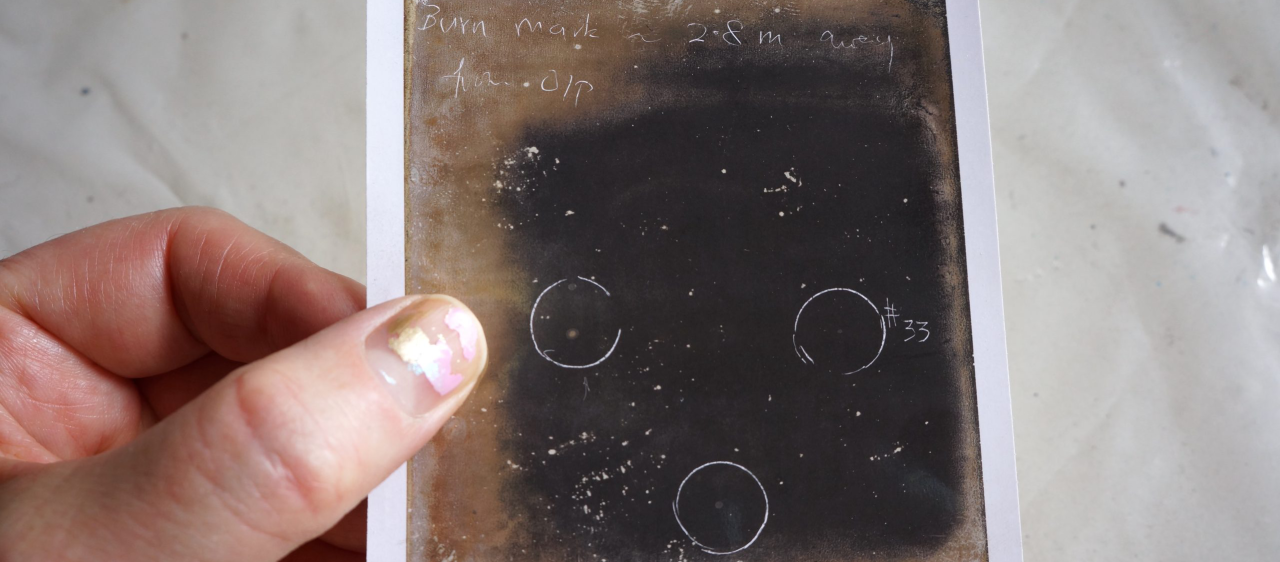
Ars Scientia, UBC’s interdisciplinary initiative at the intersection of art and science, welcomes undergraduate students across campus to participate in our 2025 Essay Prize. This is an opportunity to explore the profound and often catalyzing connections between these two fields.
[more] -
Research Project
2021 - Ongoing
Ars Scientia: Merging Artistic Practice with Scientific Research

The long search for dark matter has put the spotlight on the limitations of human knowledge and technological capability. Confronted with the shortcomings of our established modes of detecting, diagnosing and testing, the search beckons the creation of new ways of learning and knowing. Fusing the praxes of arts and science in the emergent fields of interdisciplinary research, Ars Scientia, a tripartite partnership between UBC's Stewart Blusson Quantum Matter Institute (Blusson QMI), the Department of Physics and Astronomy and the Belkin, presents an opportunity to foster new modes of knowledge exchange across the arts, sciences and their pedagogies. Funded by UBC’s Research Excellence Cluster program, Ars Scientia will conduct rich programming and research to address this line of inquiry over the next two years beginning in 2021.
[more] -
Event
10 Sep 2021
Ars Scientia: Sensorial Walk with Holly Schmidt
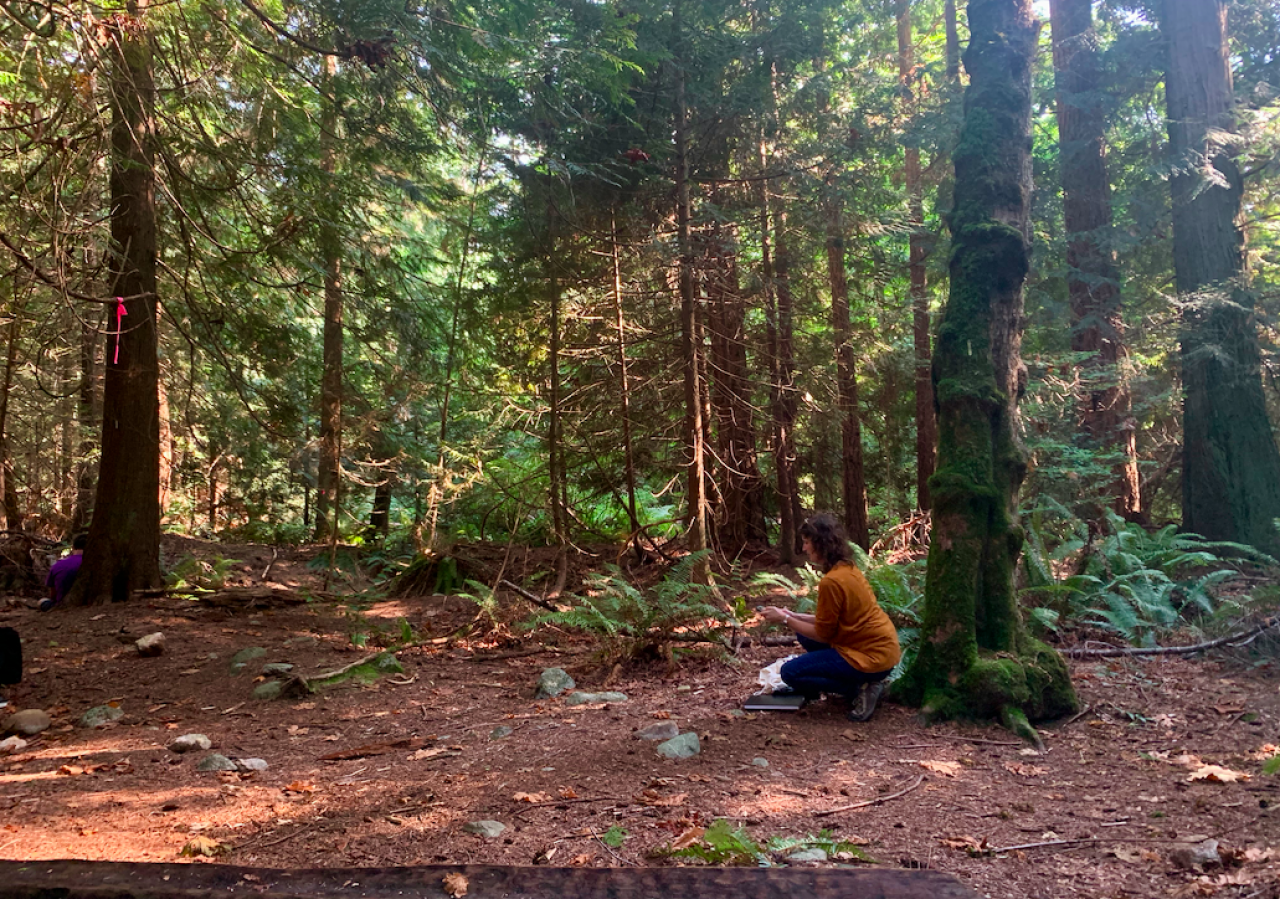
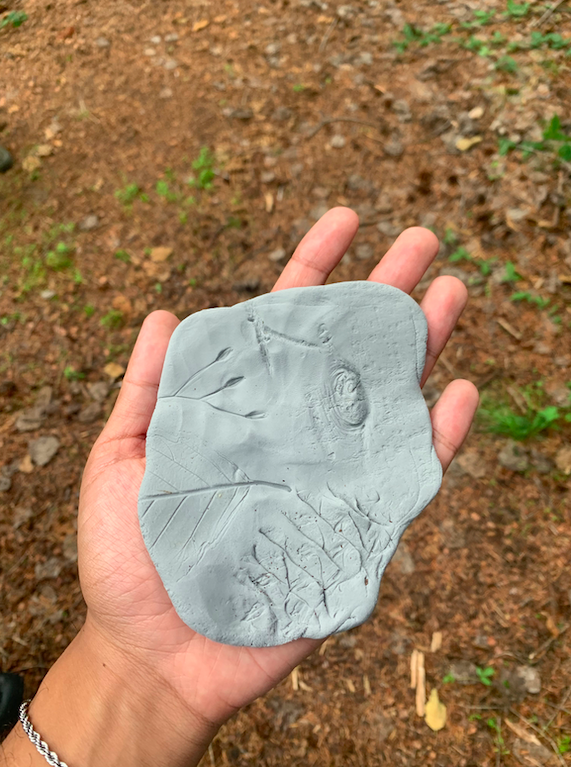
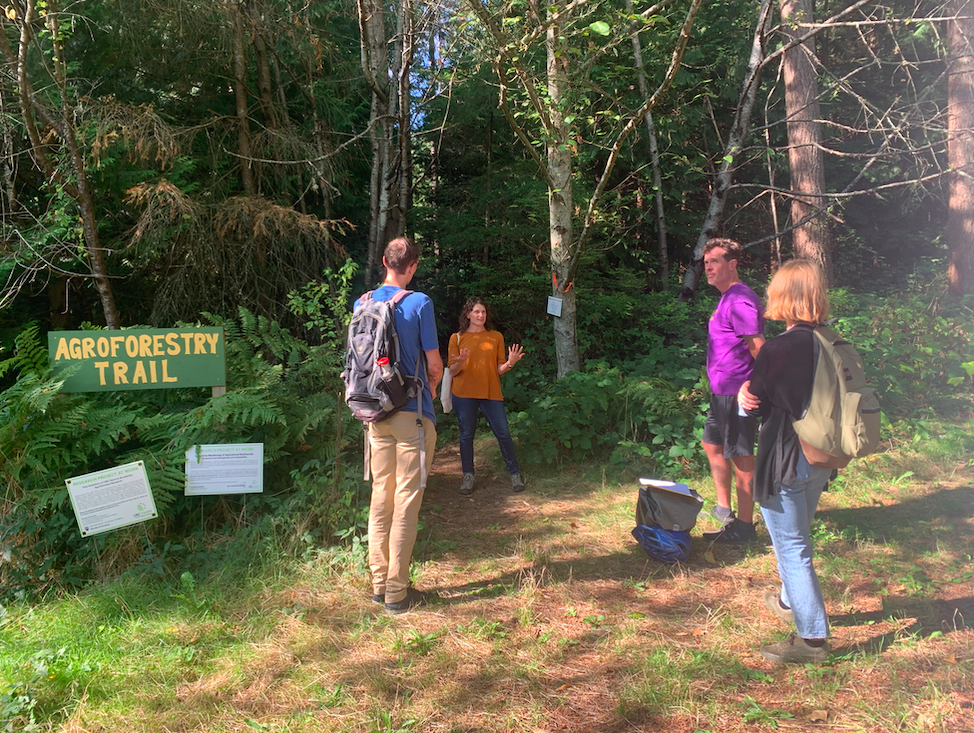

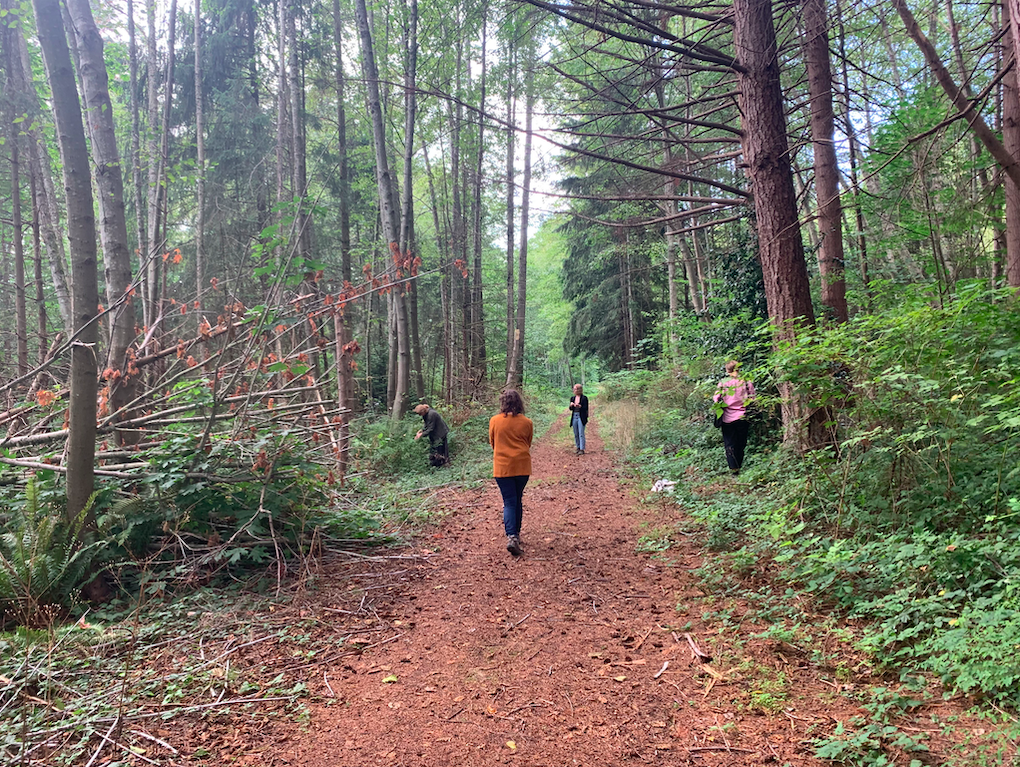 [more]
[more]
-
Event
Thursday 25 Nov 2021 at 2 pm
Symposium: Signals and Apparatuses
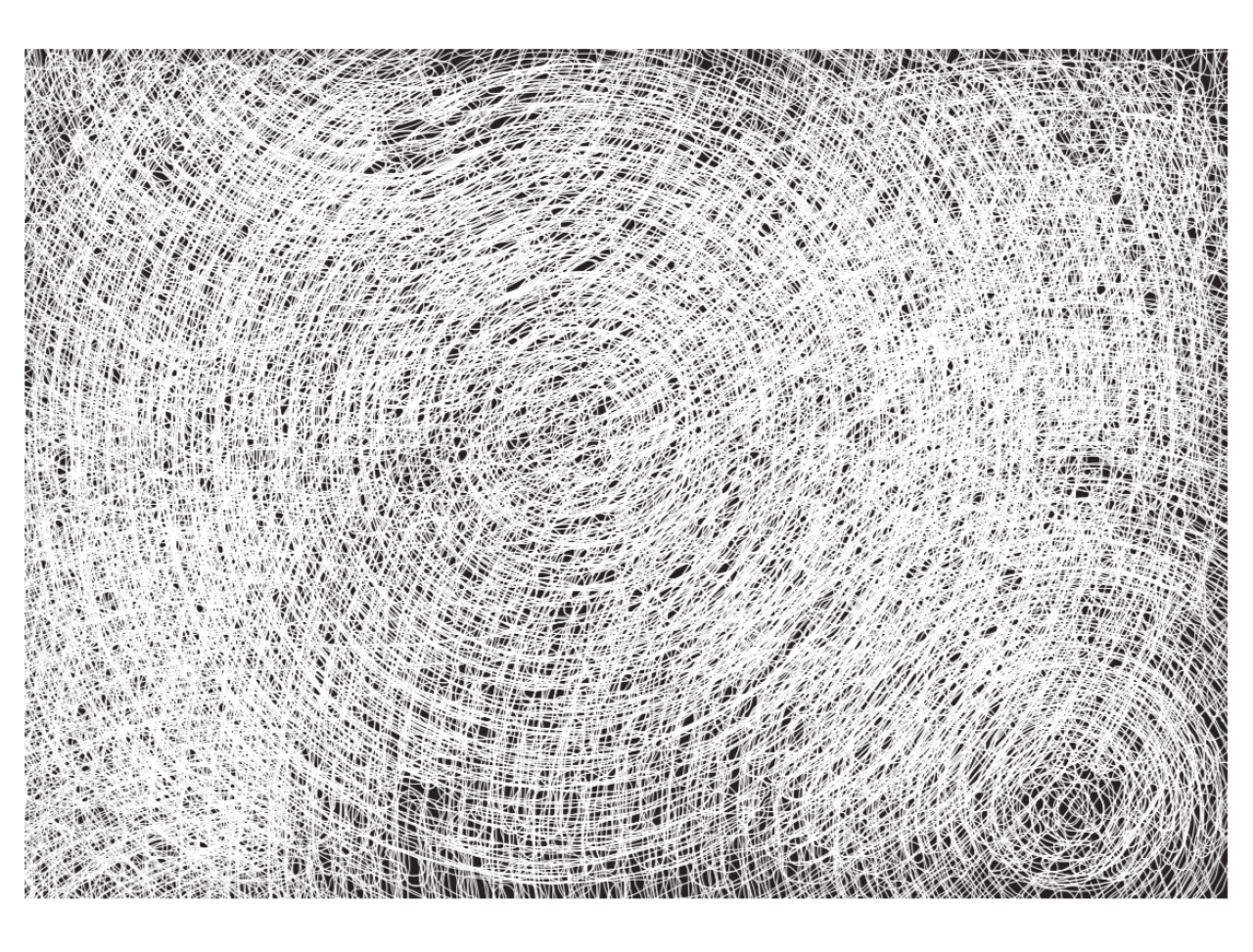
Beginning in May 2021, the Ars Scientia research cluster connected artists with physicists in a collaborative residency program to discuss and explore the intersections between the disciplines of art and science. On Thursday, 25 November 2021, the groups convened at a research symposium, Signals and Apparatuses, to share their experiences in the residency and engage in an interdisciplinary discussion with the academic community at UBC. Denise Ferreira da Silva offered opening remarks, which were followed by a discussion with Drift exhibition artist Nadia Lichtig and graduate student Rhea Gaur, alongside presentations from Ars Scientia collaborators.
[more] -
News
07 Feb 2022
Daniel Korchinski Presents on Ars Scientia and Physics
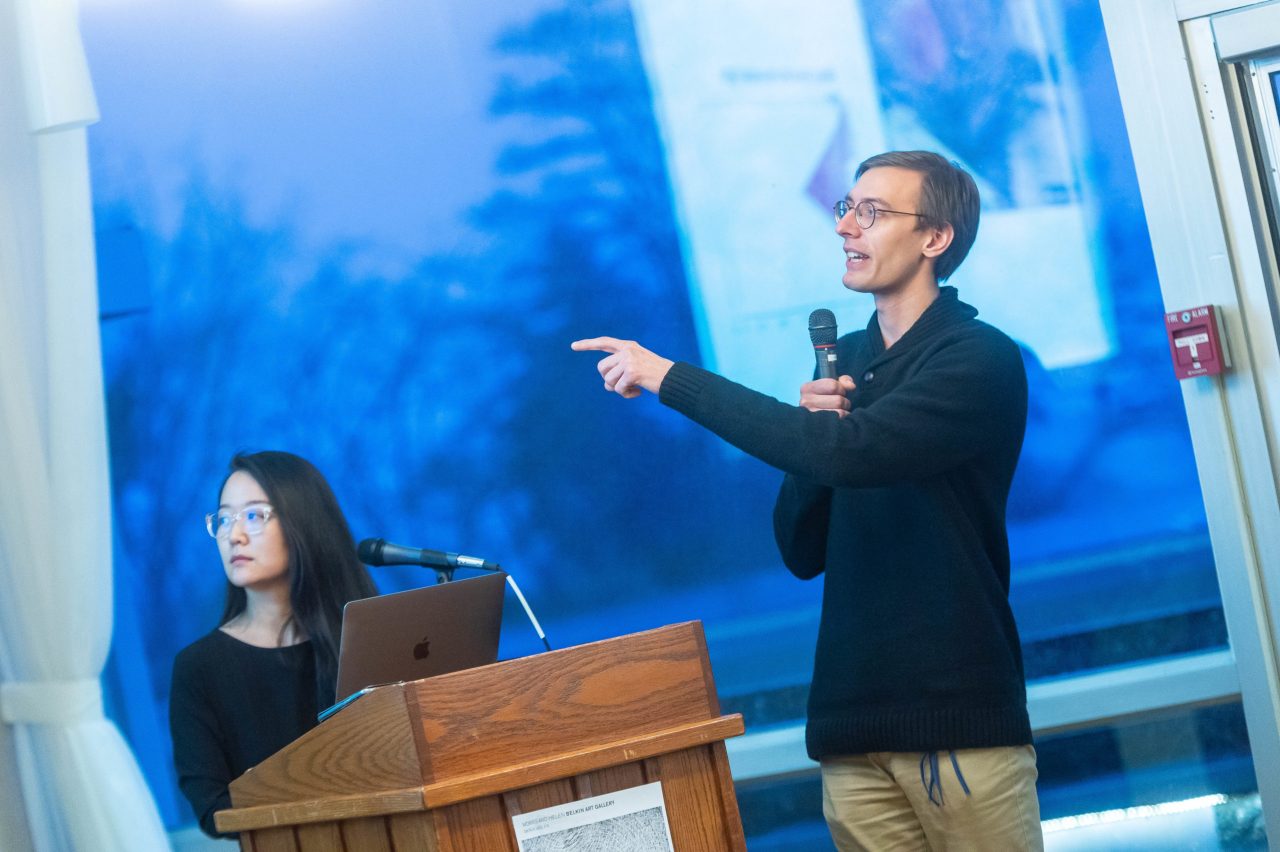
On Thursday, 17 February 2022 at 4 pm, Daniel Korchinski, PhD student at the Stewart Blusson Quantum Matter Institute, will discuss his collaboration with artist Josephine Lee as part of the Ars Scientia residency program, where the two identified points of intersection in their practices through glassblowing.
[more] -
Event
JG Mair: Tuesday 21 Feb 2023 at 2:00 pm
Timothy Taylor: Tuesday 4 Apr 2023 at 2 pm
Scott Billings: Tuesday 18 Apr 2023 at 3:30 pm
Artist Talks: jg mair, Scott Billings and Timothy Taylor
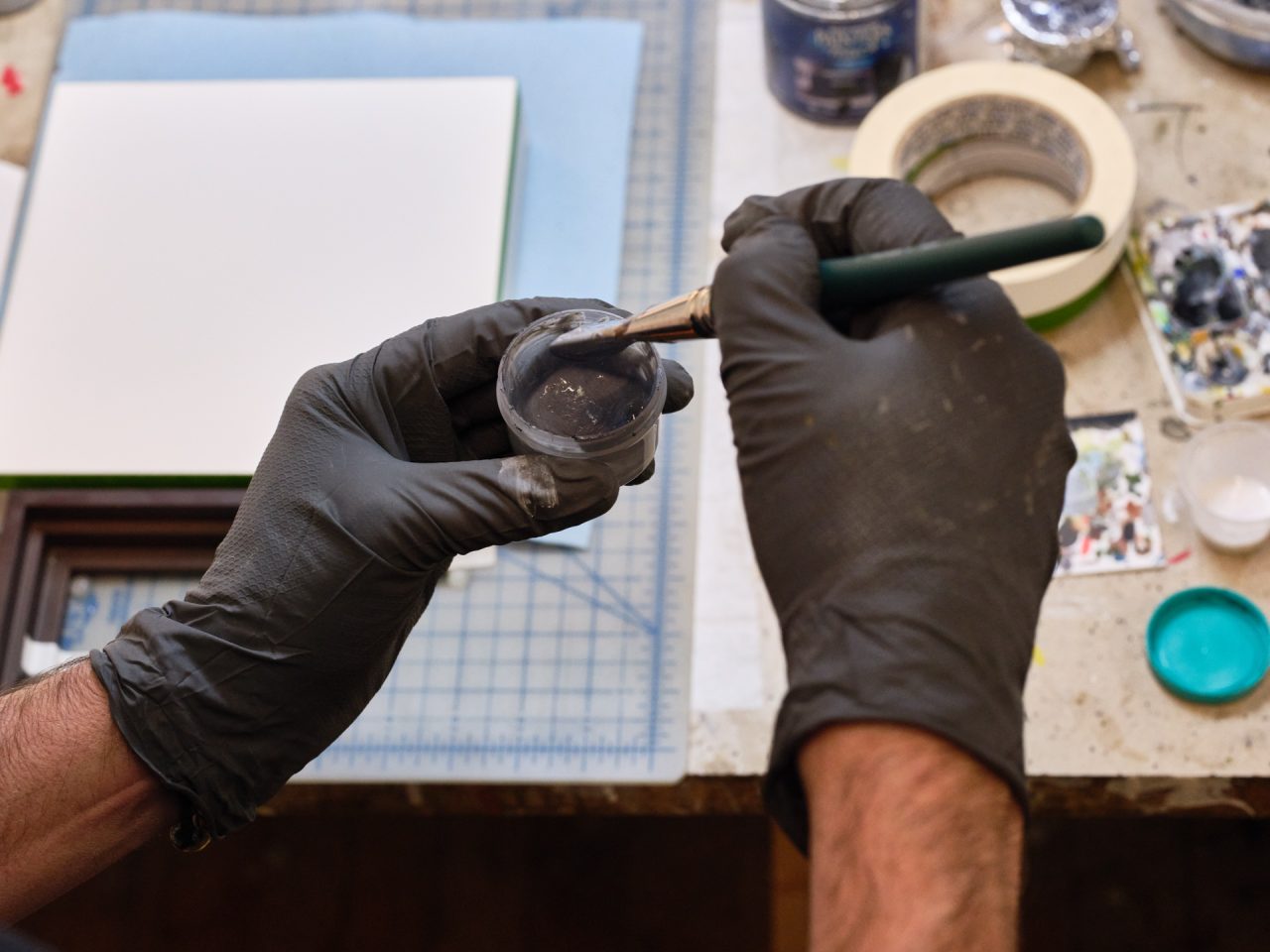
Join us for a series of artist talks hosted at the UBC’s Stewart Blusson Quantum Matter Institute (Blusson QMI). Our current cohort of Ars Scientia artists-in-residence have formed collaborative partnerships with scientists and engineers embedded in Blusson QMI.
[more]